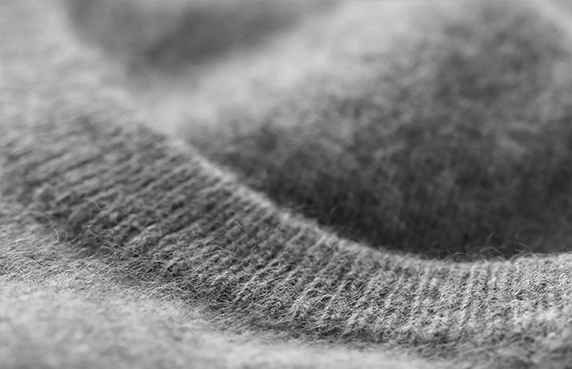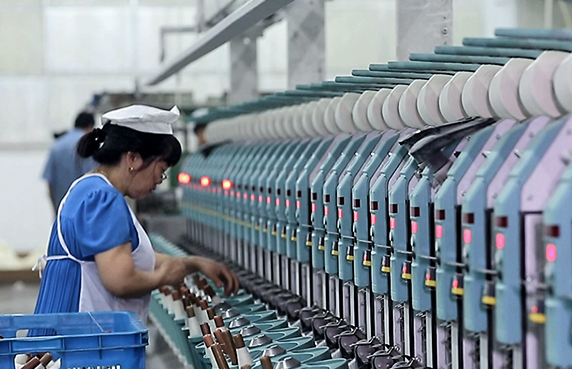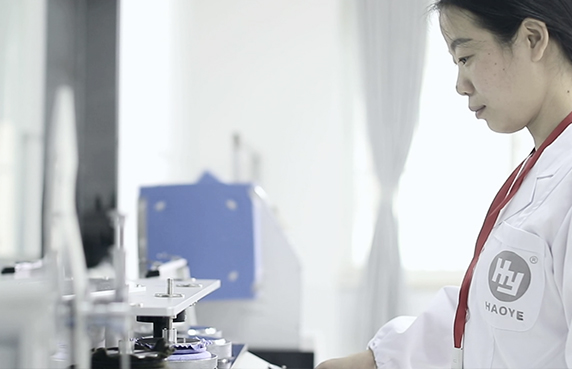The quality of raw materials is the foundation for manufacturing high-quality products. Our company places great emphasis on quality in the selection of raw materials, primarily utilizing natural, high-quality pure cashmere and pure extra-fine Merino wool.
-
Raw Material Warehouse Inspection
By conducting comprehensive inspections of yarn raw materials, the quality requirements for the materials can be ensured, thereby guaranteeing the production of yarn with good quality and performance to meet customer demands. This contributes to the production of high-quality yarn products and ensures sustainability and compliance throughout the manufacturing process.
1. Visual Inspection: Conduct visual inspections of the raw materials, including color, fiber quality, impurities, and contamination.
2. Fiber Composition Examination: Use appropriate methods and instruments to test the fiber composition of the yarn raw materials, ensuring compliance with specified fiber proportions and quality requirements.
3. Strength Testing: Perform tensile tests on the yarn raw materials to evaluate their strength and durability, ensuring they meet the requirements of the yarn production process.
4. Fiber Length and Fineness Examination: Measure the fiber length and fineness of the yarn raw materials to determine their fiber quality and suitability.
5. Wet Processing Testing: Conduct wet processing tests to assess the performance and stability of the yarn raw materials under moist conditions.
6. Contaminant Detection: Test for contaminants in the yarn raw materials, such as heavy metals, chemical residues, etc., to ensure compliance with relevant safety and environmental standards.
-
Production Workshop Process Inspection
The company conducts comprehensive quality inspections on yarn to ensure products meet high standards. This includes color testing, glossiness assessment, chemical composition analysis, fiber fineness measurement, viscosity checks, single yarn strength testing, evenness evaluation of sliver, length measurement, and defect detection.
-
Central Laboratory Process Re-Inspection
The company's inspection technicians also rigorously control the abrasion resistance, pilling resistance, color fastness to rubbing, tear strength, pH value, and other characteristics of the yarn.
-
Finished Product Yarn Warehouse Inspection
The inspection of finished yarn upon receipt into the warehouse is an important step to ensure the quality of the yarn products meets the standards. The inspection process includes the following aspects:
1. Visual Inspection: Check the appearance of the yarn to ensure there are no obvious damages, stains, or other defects.
2. Specification Check: Verify yarn specifications, color, fiber composition, and other information to ensure they meet requirements.
3. Quantity Check: Confirm if the actual quantity received matches the recorded quantity.
4. Quality Inspection: Perform sampling to inspect yarn quality, which may involve tests like tensile strength testing, fabric density testing, etc.
5. Packaging Inspection: Inspect the yarn packaging for integrity to ensure there are no damages or contamination.
-
Batch Finished Product Fabric Inspection
The inspection of finished woven fabric is the process of conducting quality checks on the fabric after it has been produced. The following are the main aspects of the inspection of finished woven fabric:
1. Visual Inspection: Check the appearance of the fabric, including surface smoothness, color uniformity, absence of noticeable stains, defects, or damages.
2. Dimensional Inspection: Measure the dimensions of the fabric, such as length, width, and thickness, to ensure compliance with specified size requirements.
3. Strength Inspection: Perform tensile testing to assess the fabric's strength and durability, ensuring it can withstand stress under normal usage conditions.
4. Colorfastness Inspection: Evaluate the fabric's colorfastness, i.e., whether the color fades or bleeds during washing, rubbing, or exposure to light.
5. Detail Inspection: Examine the fabric's details, such as edge finishing, seam strength, and neatness.
6. Packaging Inspection: Check the packaging of the fabric to ensure it is intact, protecting the fabric from damage and contamination.
-
Batch Inspection Data Retention And Archiving
The retention and archival of inspection data for yarn fabrics batches is done to record and trace product quality and meet potential needs for quality verification and complaint handling.
1. Data Recording: Detailed records of various inspection results for yarn fabrics are maintained during each batch inspection, including inspection dates, batch numbers, inspection items, and measurement values.
2. Data Storage: Inspection data is stored in reliable databases or archival systems to ensure data integrity and security.
3. Data Retention Period: The retention period for yarn fabric batch inspection data is determined based on relevant standards and regulations. Typically, this period should cover the product's lifespan and the potential occurrence cycle of quality issues.
4. Data Traceability: Archived inspection data should have the ability to trace back to specific batches and production processes for retrospective analysis and investigation when needed.
5. Data Confidentiality: Adequate measures are taken to protect the confidentiality of archived inspection data, preventing unauthorized access or disclosure.






